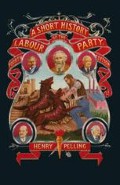Abstract
The main characteristics of the 1950’s for the Labour Party were: public dissension among its leaders, and a decline of its popularity with the electorate. The two features were of course connected, though perhaps not as closely as some people may imagine, for, as we have seen, there had been plenty of open disagreements within the party in its long years of growth before the Second World War.
Access this chapter
Tax calculation will be finalised at checkout
Purchases are for personal use only
Preview
Unable to display preview. Download preview PDF.
Further Reading
For a journalistic but well-informed account of the controversies within the Labour ranks, see Leslie Hunter, Road to Brighton Pier (1959).
S. Haseler, The Gaitskellites (1969), examines the views of the right-wing leadership sympathetically and in detail.
For left-wing attitudes to questions of foreign policy in the first post-war decade, see Leon D. Epstein, Britain: Uneasy Ally (Chicago, 1954).
Different views of the party’s power-structure and the rote of the party conference are put by Robert T. McKenzie in his British Political Parties and by Saul Rose, ‘Policy Discussion in Opposition’, Political Studies iv (1956), 126–38.
See also Robert T. McKenzie, ‘Policy Decisions in Opposition: A Rejoinder’, Political Studies v (1957), 176–82.
Mr McKenzie’s book, though of great value, deals inadequately with the historical role of the trade-union leadership within the party. For an account of how the succession to Attlee was determined, see the articles by Lord Williamson and Sam Watson in W. T. Rodgers (ed.), Hugh Gaitskell, 1906–63 (1964).
Martin Harrison’s Trade Unions and the Labour Party since 1945 is also important for this period, as are the Nuffield election studies for 1951, 1955, and 1959, all of them partially or wholly prepared by David Butler.
For studies of the Campaign for Nuclear Disarmament see C. Driver, The Disarmers (1964)
and F. Parkin, Middle-class Radicalism (Manchester, 1968).
Author information
Authors and Affiliations
Copyright information
© 1972 Henry Pelling
About this chapter
Cite this chapter
Pelling, H. (1972). Dissension and Decline (1950–60). In: A Short History of the Labour Party. Palgrave Macmillan, London. https://doi.org/10.1007/978-1-349-15474-6_7
Download citation
DOI: https://doi.org/10.1007/978-1-349-15474-6_7
Publisher Name: Palgrave Macmillan, London
Print ISBN: 978-0-333-14303-2
Online ISBN: 978-1-349-15474-6
eBook Packages: Palgrave Political & Intern. Studies CollectionPolitical Science and International Studies (R0)

